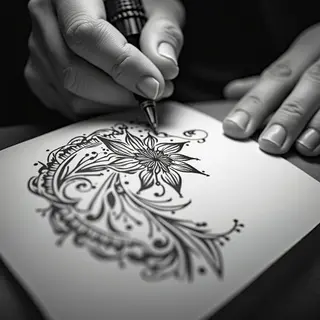Beyond the Sketchbook: What Really Makes a Great Tattoo Artist
It's easy to assume all tattoo artists are naturally gifted drawers. The reality is more nuanced—artistic talent is essential, but it’s only part of the equation. Many successful artists have built their skills through design principles, stencil work, and a deep understanding of tattooing itself.
The Core Skills Beyond Drawing
Forget the romantic image of an artist sketching masterpieces. Tattooing demands a different skillset—one focused on precision, consistency, and understanding how images behave when permanently etched onto skin.
Design Principles: The Foundation
Composition, balance, negative space—these aren't just art school buzzwords. They’re the bedrock of compelling tattoo designs. Even if your initial sketches feel rough, mastering these principles will elevate your work.
Stencil Creation: The Transfer Process
Tattooing relies heavily on stencils. Learning to create them—whether through traditional tracing or digital methods using software like Adobe Illustrator—is crucial for transferring artwork accurately and creating simplified designs.
Linework & Color: The Building Blocks
Strong, consistent linework is the foundation of most tattoos. Focus on controlled lines and shading—more important initially than intricate details. And don't underestimate color theory; understanding how colors interact on skin is vital for lasting vibrancy.
Anatomy & Skin: Respecting the Canvas
A solid grasp of human anatomy isn't just interesting—it’s essential. It ensures proper placement, avoids distortion as the body moves, and minimizes potential complications.
Alternative Routes to Artistic Growth
Feeling intimidated by traditional drawing? There are other paths. Digital art offers a forgiving space for experimentation, and tracing existing artwork (with permission!) can be a valuable learning tool.
Consider collaborating with illustrators or graphic designers—you can focus on the tattooing process while leveraging their artistic expertise. Just be upfront about your skill level and contribute meaningfully to the design.
Showcasing Your Progress: A Portfolio That Speaks
Forget trying to impress with ‘original’ drawings. Focus on showcasing clean linework, well-executed stencils, and effective color application—demonstrate your understanding of tattoo principles and a commitment to safety and professionalism.


